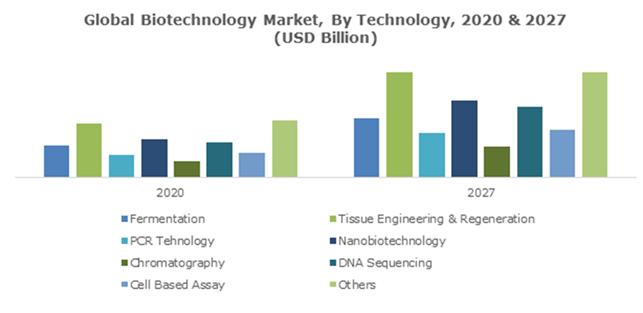About Conference
Plant Biotech-2023 invites all the participants from all over the world to attend “48th Annual Congress on Plant Biotechnology & Plant Sciences” during June 26-27, 2023 Chicago, USA which includes prompt keynote presentations, Oral talks, Poster presentations and Exhibitions.
PLANT BIOTECH-2023 is the premier event that brings together a unique and international mix of experts, researchers and decision makers both from academia and industry across the globe to exchange their knowledge, expertise and research innovations to build a world class plant genomics and Biotechnology conference.
It’s our greatest pleasure to welcome you to the official website of “48th Annual Congress on Plant Biotechnology & Plant Sciences” that aims at bringing together the Professors, Researchers, scientists, Program developers to provide an international forum for the dissemination of original research results, new ideas and practical development experiences which concentrate on both theory and practices. The conference will be held in June 26-27, 2023 Chicago, USA. The theme of the conference is around, “Exploring the future advancements in the field of plant genomics and biotechnology”. Featuring 2days of scientific workshop, special sessions, speaker & poster session, Industrial Expo. 300+ attendees from all over the world.
The event focuses on aspects such as breeding, molecular marker development, crop/ trait improvement, disease resistance, epigenetics, evolution studies and pathology as well understanding tools to overcome barrier and enable successful data analysis and management. Presentations concentrate not only particular to plant genomics but also crop and forestry research ranging from wheat, barley, maize and rice to potato, tomato, Arabidopsis, biofuels and various fruits. The Event organizes a conference series of 1000+ Global Events inclusive of 300+ Conferences, 500+ Upcoming and Previous Symposiums and Workshops in USA, Europe & Asia with support from 1000 more scientific societies and publishes 700+ Open access journals which contains over 30000 eminent personalities, reputed scientists as editorial board members.
Why to attend???
With members from around the world focused on learning about Plant Genomics and its advances; this is your best opportunity to reach the largest assemblage of participants from the Plant Science and Genomics community. Conduct presentations, distribute information, meet with current and potential scientists, make a splash with new advancements and developments, and receive name recognition at this 2-day event. World-renowned speakers, the most recent techniques, developments, and the newest updates in Plant Genomics are hallmarks of this conference.
Target Audience:
Plant Genomics Students, Scientists
Plant Genomics Researchers
Plant Genomics Faculty
Agricultural Colleges
Plant and Agriculture Associations and Societies
Business Entrepreneurs
Training Institutes
Software developing companies
Manufacturing Agricultural Devices Companies
Sessions & Tracks
Track 1: Medicinal Plants and Pharmacognosy
Pharmacognosy deals with the natural drugs obtained from organisms such as most plants, microbes, and animals. Up to date, many important drugs including morphine, atropine, galanthamine, etc. have originated from natural sources which continue to be good model molecules in drug discovery. A medicinal plant is any plant which, in one or more of its organs, contains substances that can be used for therapeutic purposes or which are precursors for the synthesis of useful drugs. Pharmacognosy is the study of medicines or crude drugs produced from natural sources such as plants, microbes, and animals. It includes analysis of their biological, chemical, biochemical, and physical properties.
Track 2: Phytonanotechnology
Nano-phytomedicines are synthesized from lively phytoconstituents or plant extracts. Advancements in nanotechnology additionally help in the diagnosis, tracking, control, and prevention of diverse sicknesses. Protect cells and DNA from harm that may lead to most cancers. Reduce inflammation. Slow the increase price of some most cancers cells. Help adjust hormones Phytosynthesis is one of the famous techniques used to synthesize metal oxide nanoparticles, in which plant extracts are used as ecofriendly lowering and stabilizing retailers. Nanoparticles have the tendency to be bioaccumulated and transported to the edible components of the flora, ultimately causing health risks.
Track 3: Plant Physiology & Biochemistry
Plant biochemistry entails the examine of the biochemistry of autotrophic organisms which include photosynthesis and other biochemical tactics specific to vegetation. Plant Biochemistry provides every subject matter from the cell degree to the ecological and environmental ranges, putting it in the context of the complete plant. Plant body structure deals with different plant systems and their functioning. It permits analysing tactics in flora, specifically – photosynthesis, mineral nutrients, respiratory, transportation, and in the end plant development and increase that are traits displayed by using residing entities. Thorough knowledge in biochemistry is vital in knowledge unique components of clinical sciences like drug improvement, immunology, pathology, pharmacy, vaccine improvement, and so on.
Track 4: Plant Biotechnology
Plant biotechnology is a hard and fast of techniques used to evolve flowers for specific needs or opportunities. Situations that integrate multiple desires and possibilities are commonplace. Nanotechnology has numerous programs. Food, generation, fuels, batteries, environmental causes, chemical sensors, or even carrying items have already benefited from nanotechnology and will advantage even greater within the destiny. Nanotechnology is helping to notably enhance, even revolutionize, many generation and enterprise sectors: statistics technology, place of birth security, medicinal drug, transportation, electricity, meals protection, and environmental science, amongst many others. Out of three human studies, best one showed a passage of inhaled nanoparticles into the bloodstream. Materials which by means of themselves are not very harmful could be toxic if they may be inhaled inside the shape of nanoparticles.
Track 5: Plant Tissue Culture
Plant tissue culture is a collection of techniques used to keep or develop plant cells, tissues or organs below sterile situations on a nutrient tradition medium of regarded composition. It is broadly used to produce clones of a plant in a technique known as micropropagation. Gottlieb Haberlandt is referred to as the father of plant tissue tradition. He became an German botanist, who become the primary to separate and culture the plant cells on knop's salt solution Tissue culture normally refers to the subculture of animal cells and tissues, with the greater particular time period plant tissue way of life getting used for flowers. The time period "tissue lifestyle" changed into coined by means of American pathologist Montrose Thomas Burrows. Tissue tradition can be used with any plant cells that have a feature known as totipotency; in other phrases, plant cells that may regenerate from a mobile into entire, mature flora.
Track 6: Plant Genetics & Genomics
Plant genomics ambitions to series, signify, and take a look at the genetic compositions, systems, groups, capabilities, and interactions/networks of an entire plant genome Plant Genomics Is Key to Food Supply, Human Health, and a Sustainable Environment. To understand and deal with human illnesses, the fitness sciences can attention assets at the dedication of the whole DNA sequence of a unmarried animal genome, the human genome. Agricultural genomics uses technology to examine and classify the genes of vegetation a good way to broaden new, unique styles of plants. These new crops can help cope with numerous food issues around the sector and may improve the productiveness and sustainability of many plant types and farm animals productions. Genomics includes the scientific look at of complex sicknesses such as heart disorder, bronchial asthma, diabetes, and cancer because these illnesses are commonly triggered extra by using a mixture of genetic and environmental factors than by individual genes.
Track7: Plant Sciences & Plant Research
Plant scientists study plant life to be able to assist producers of meals, animal feed, and fiber vegetation to feed a growing populace and preserve natural sources. Conduct studies in breeding, body structure, manufacturing, yield, and management of plants and agricultural plant life or timber, shrubs, and nursery stock, their growth in soils, and control of pests; or have a look at the chemical, physical, biological, and mineralogical composition of soils as they relate to plant or crop boom. Formulate authentic questions about flora into empirically testable hypotheses, accumulate and examine records acquired from original studies, and translate and observe experimental records to strengthen the field and resolve actual-world troubles. Synthesize and observe know-how to higher apprehend and manipulate plant-based totally structures.
Track 8:Plant molecular biology
Plant Molecular Biology definition: A program that focuses on the application of molecular biology, biochemistry, and biophysics to the study of biomolecular structures, functions, and processes specific to plants and plant substances. Plant Molecular Biology is an international journal dedicated to rapid publication of original research in all areas of plant biology. Since its founding in 1981, it has continually ranked among the leading journals. Coverage addresses important biological problems of broad interest. Molecular Biology Techniques include DNA cloning, cut and paste DNA, bacterial transformation , transfection, chromosome integration, cellular screening, cellular culture, extraction of DNA, DNA polymerase DNA dependent, reading and writing DNA, DNA sequencing, DNA synthesis, molecular hybridization, rewriting DNA
Track 9: Plant Pathology & Mycology
Mycology is the observe of fungi. It is closely related to plant pathology as fungi motive the general public of plant disorder. Fungi are a few of the dominant causal agents of plant illnesses. To colonize plant life and purpose ailment, pathogenic fungi use numerous techniques. Some fungi kill their hosts and feed on dead fabric (necrotrophs), whilst others colonize the dwelling tissue (biotrophs). The technological know-how of fungi or, in case you opt for, the department of botany coping with. Fungi, and people who examine it are Mycologists. As such it accommodates many. Different things, consisting of the taxonomy of fungi. Plant Pathology or Phytopathology. These diseases are resulting from situations external to the plant, not residing marketers. They cannot unfold from plant to plant, however are very common and need to be considered whilst assessing the fitness of any plant. Examples of abiotic diseases consist of nutritional deficiencies, soil compaction, salt damage, ice, and sun scorch
Track 10: Horticulture
The main branch of agriculture known as horticulture deals with the maintenance of nurseries, gardens, orchards, and plantations as well as the production of flowers, greens, vegetables, plant life, herbs, and ornamental trees. It is a very diverse field with virtually endless employment opportunities in a range of job environments. The strongest evidence that gardening improves our health and fitness comes from the fact that time spent in a park, garden, or other green space significantly decreases stress and eases both physical and mental tension. Horticulturists are experts in the production of food and crops, and they are involved in a wide range of crops, including plants, spices, vegetables, and finished goods. This knowledge can enable horticulturists to provide expert advice on crop maximization and harvesting techniques.
Track 11: Agronomy & Agricultural Research
Agricultural research is widely defined as any field of study with an interest in improving plant productivity and satisfaction through genetic enhancement, increased plant protection, irrigation, storage techniques, farm mechanisation, green marketing, and better resource management. Agricultural studies are a particular type of research method that may be carried out by utilising laboratory and field facilities as well as by connecting with farmers as vital informants for their improvement and raising their level of daily subsistence. Without a doubt, a job in gardening is worthwhile. It is without a doubt a gift to the beholder to sow a seed and watch it grow into a beautiful flower or harvest.
Track 12: Hybrid Crops
Hybrid agricultural and horticultural vegetation can play an critical function in assisting global meals protection. They produce higher yields and are often more resistant than non-hybrid sorts to sicknesses and weather strain. Hybrids are chosen to enhance the characteristics of the resulting vegetation, consisting of better yield, more uniformity, stepped forward coloration, disorder resistance. An vital component is the heterosis or combining potential of the determine plant life. Crossing genetically distinct vegetation produces a hybrid seed (plant) with the aid of controlled pollination. To produce constant F1 hybrids, the authentic move need to be repeated for every season. The seeds that broaden inside that fruit are hybrid seeds. Hybrid seeds are listed as F1 sorts, rather than open pollinated (OP) kinds. Open pollinated seeds result from an easy sharing of pollen between two like figure flowers.
Track 13: Plant Metabolism
Plant metabolism is described because the complicated of bodily and chemical activities of photosynthesis, respiration, and the synthesis and degradation of natural compounds. Metabolism is a balancing act involving styles of sports that cross on on the equal time: constructing up frame tissues and energy stores (referred to as anabolism) breaking down body tissues and electricity stores to get greater gasoline for body functions (called catabolism). Sugars play an essential role in plant boom and metabolism via supplying carbon skeletons and power for cellular metabolism. Metabolism is the method by means of which the frame changes foods and drinks into strength. During this system, calories in food and drink blend with oxygen to make the strength the frame needs. Plants use their specialised metabolic pathways to assemble molecules that help them appeal to pollinators, repel pests and herbivores, guard themselves or their seeds from environmental stressors like UV and drought, and greater.
Track 14: Plant Anatomy
The study of the tissue and cellular makeup of plant organs is known as plant anatomy. When referring to plant life, the term "anatomy" typically refers to the systems that can be seen with an electron or powerful light microscope. Understanding the structural adaptations of plant life to various environmental situations is made possible by the study of plant anatomy. Additionally, it allows us to distinguish between monocots, dicots, and gymnosperms. Such an examination is related to plant skeletal design. As a result, it aids in the growth of food crops. The stigma, fashion, and ovary make up the pistil, which is typically located in the centre of the flower.
Track 15: Plant Breeding and Molecular Breeding
The manner of hybridization involves the subsequent steps: Selection of mother and father with desired characters: All the proper developments which might be required are first decided on. Selfing: The selected plants are allowed to go through self-breeding that allows you to result in homozygosity of the preferred traits. The flower of existence is some other sacred geometric shape. It is the image of creation. It is created by forming a circle then moving to the edge of that circle and forming any other one. Each circle starts one radius far from the encircling circles and equal length. All vascular flowers have critical systems known as roots. A root machine is the collective unit of a plant's roots.
Market Analysis
The global plant biotechnology market is dominated by North America, with a CAGR of 13.0% from 2019-2025, followed by Europe and Asia-Pacific region. Some of the key factors influencing market demand include increasing demand for bio fuels, growing transgenic crops demand owing to the rising food demand, rising per capita income and growing population. However, concern about genetically modified crops and low acceptance, strict rules and regulations related to the registration of products are acting as restraining factors to the market growth. Advancements in biotechnology and rising use of biotech equipment for biofuel production are expected to have a positive impact on the industry. Biofuel as an alternative is gaining importance due to its benefits as a cheaper and environmental-friendly product. The technological challenges associated with biofuel production are also addressable using biotech solutions and equipment which in turn is expected to drive the demand in the longer run.
In 2020, the global biotechnology market saw astounding growth and reached a value of USD 497 billion. In 2021, the estimated value stood at USD 793.87 billion. With an expected CAGR growth rate of more than 9.4% between 2021 and 2027, this provides much scope for the ongoing development. Many subareas of biotechnology can benefit from this, especially molecular biology. This is also the driving force behind the recent advancements in metabolomics, genomics, and proteomics.

Other Important Factors Behind the Biotechnology Market Growth
Apart from COVID-19, increased awareness about the wide application of biotechnology in recent times has been one of the primary driving factors. There have been tremendous improvements in aspects like nutrition of animals and humans, development of medicines and drugs, and environmental protection. According to current market dynamics, the improvements in agriculture will also play a crucial role in taking the market forward.

As new technologies are evolving, the importance of biotechnology is becoming more prevalent. This also raises the demand for better data management and interpretation to handle all the massive generated data. Simultaneously, the growing demand is likely to maintain a positive impact on the biotechnology market.Although it is not without its challenges, the recent growth analysis report proves that it can overcome them. However, factors like the value chain, end-user analysis, competition mapping, and other macro and microeconomic factors across regions and countries will influence the market.But for now, it can be said that the biotechnology market is a promising field that is not looking to slow down any time soon.















